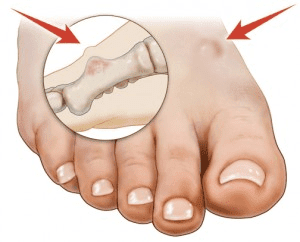Signs And Symptoms Of Bone Cancer In The Foot
Bone cancer in foot - Bone cancer affects more than 2,000 people a year in the United States. Children and adolescents more often than adult bone cancer, which develops a malignant tumor that destroys regularly-functioning bone cells. Usually, in the long bones of the body, such as the arms or legs, there are two types of bone cancer, primarily, which originates from bone and secondary, which metastasizes or spreads to the bone of another site already affected cancer. Secondary or sown bone cancer occurs much more often than the primary bone cancer.
In most cases of bone cancer, tumor site tumor has been the main symptom reported in patients. Initially, this pain may be felt during prolonged periods of activity or at night. This pain is usually more severe in time as the cancer progresses, however, the cancer and the pain can be present for many months or even years before the patient ever thinks to visit a doctor. If you experience pain in your foot or leg and suspect you have bone cancer, consult your doctor so that they can complete a thorough exam.
Besides pain, a bump on the bone or surrounding tissue is present. Keep in mind that this is not for all types of bone cancer and that a mass is not necessarily bone cancer.
Bone cancer weakens the bone itself and can lead to fractures although no serious trauma has occurred. Just getting up from a seated position can be enough to crack a weakened bone. Inflammation and sensitive joints may also be a sign of bone cancer.
The treatment options for bone cancer depends on what kind of cancer it is, the location and how aggressive it is. Chemotherapy and radiation are common treatment courses. In rare cases, bone cancers that have developed into amputation of the foot or leg.
In most cases of bone cancer, tumor site tumor has been the main symptom reported in patients. Initially, this pain may be felt during prolonged periods of activity or at night. This pain is usually more severe in time as the cancer progresses, however, the cancer and the pain can be present for many months or even years before the patient ever thinks to visit a doctor. If you experience pain in your foot or leg and suspect you have bone cancer, consult your doctor so that they can complete a thorough exam.
Besides pain, a bump on the bone or surrounding tissue is present. Keep in mind that this is not for all types of bone cancer and that a mass is not necessarily bone cancer.
Bone cancer weakens the bone itself and can lead to fractures although no serious trauma has occurred. Just getting up from a seated position can be enough to crack a weakened bone. Inflammation and sensitive joints may also be a sign of bone cancer.
The treatment options for bone cancer depends on what kind of cancer it is, the location and how aggressive it is. Chemotherapy and radiation are common treatment courses. In rare cases, bone cancers that have developed into amputation of the foot or leg.
*Image source : Radiopaedia

Post a Comment for "Signs And Symptoms Of Bone Cancer In The Foot"